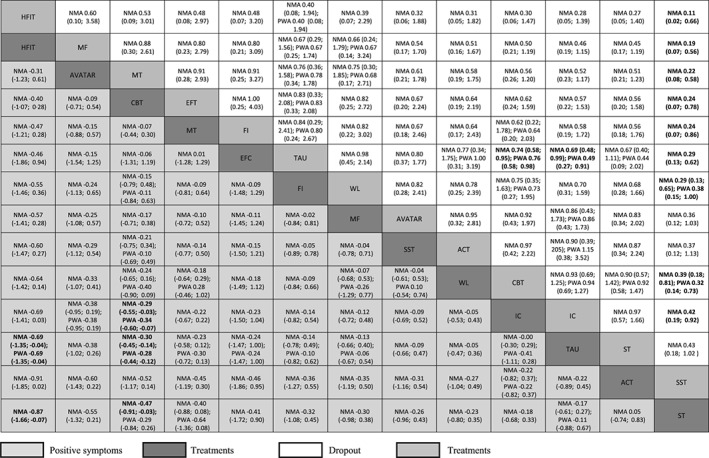Figure 3.

Comparisons between psychological treatments for positive symptoms and study dropouts. Results for positive symptoms are presented in the lower triangle; results for dropout are presented in the upper triangle. Significant results are presented in bold. Relative treatments effects are measured by standardized mean difference (SMD) for positive symptoms and risk ratio (RR) for study dropout along with their 95% confidence intervals (95% CIs). SMDs lower than 0 and RRs lower than 1 favour the column defining treatment. SMDs of –0.2 can be considered small, −0.5 medium, and –0.8 large. To obtain SMDs for comparisons in the opposite direction, negative values should be converted into positive values, and vice versa. To obtain RRs for comparisons in the opposite direction, reciprocals should be taken. ACT – acceptance and commitment therapy, CBT – cognitive behavioral therapy, EFC – experience focused counselling, FI – family intervention, HFIT – hallucination focused integrative treatment, IC – inactive control, MT – metacognitive training, MF – mindfulness, SST – social skills training, ST – supportive therapy, TAU – treatment as usual, WL – waitlist, NMA – network meta‐analysis, PWA – pairwise meta‐analysis.
